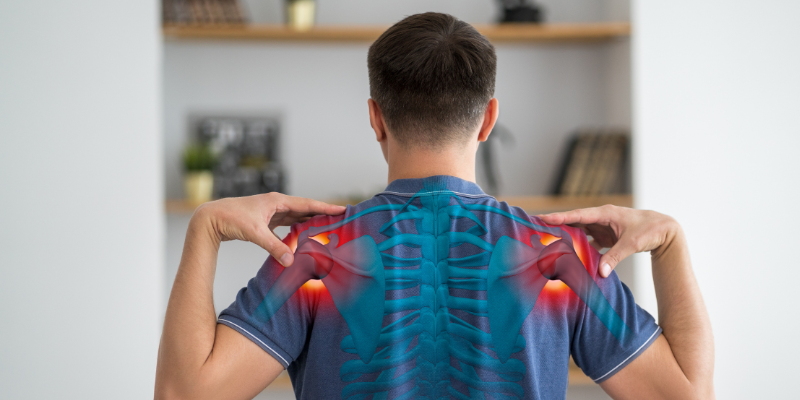Shoulder Arthroscopy
Shoulder Arthroscopy Treatment

Treatment Range Hospital in Hyderabad offers advanced shoulder arthroscopy for conditions such as rotator cuff tears, labral injuries, shoulder impingement, and joint instability. Our orthopedic specialists use minimally invasive arthroscopic techniques to diagnose and treat shoulder problems with precision and minimal recovery time. As a leading center for shoulder surgery in Hyderabad, we ensure safe and effective outcomes for both athletes and individuals with chronic shoulder pain.
The procedure involves small incisions through which a camera and instruments are inserted to repair or remove damaged tissue. Whether it’s a torn tendon, labrum tear, or shoulder joint irritation, our surgeons tailor the treatment based on your condition and activity level. Post-surgery, we provide personalized rehabilitation to help restore full shoulder movement and strength.
If you’re looking for shoulder arthroscopy in Hyderabad, Treatment Range Hospital combines expert care, modern technology, and affordable packages. We are committed to helping you regain shoulder function and return to your daily activities or sports with confidence.
- Your 6 - Phase health Process
Your Complete Shoulder Arthroscopy Journey
🩺Phase 1: Symptoms Identification
- Persistent shoulder pain or aching, especially at night
- Limited range of motion or stiffness
- Clicking, catching, or grinding sensations
- Weakness when lifting or rotating the arm
- Difficulty with overhead or throwing activities
📋Phase 2: OPD Consultation with Orthopedic Surgeon
- Physical examination of shoulder movement and strength
- Imaging tests: X-ray to assess bones; MRI or ultrasound to detect soft tissue damage
- Evaluation of sports/work-related strain and prior injuries
- Decision on conservative management vs. arthroscopic surgery
🧘♀️Phase 3: Causes (Etiology)
- Repetitive overhead movements
- Age-related wear and tear of tendons or cartilage
- Heavy lifting or trauma to the shoulder joint
- Degenerative joint disease or chronic instability
- Sudden dislocation or impact injury
🧪Phase 4: Diagnosis & Surgical Planning
- Clinical testing to confirm suspected diagnosis
- MRI findings guide decision-making on partial/full-thickness tears, labral damage, or impingement
- Surgical planning includes repair of the rotator cuff, labrum, or decompression
- Preoperative assessment for anesthesia clearance and surgical fitness
💊Phase 5: Treatment – Shoulder Arthroscopy
- Performed via small incisions using an arthroscope and specialized tools
- Rotator cuff/labral tears repaired with sutures and anchors
- Bone spurs or inflamed tissue (bursitis) removed to relieve impingement
- Procedure duration: 60–90 minutes; mostly day-care
- Arm may be placed in a sling postoperatively
💪Phase 6: Post-Surgery Care & Recovery
- Sling used for 3–6 weeks to protect repair
- Physiotherapy starts gradually to restore motion, followed by strength training
- Pain management with medications and cold therapy
- Return to desk work: 1–2 weeks; sports and lifting: 3–6 months
- Regular follow-ups for rehab guidance and monitoring healing via clinical exams or imaging
Insurance Support










- Why Choose Us
Why patients trust us with their care
- Patient Testimonials
Patient stories of care and recovery










- Frequently Asked Questions
Helping you understand Our healthcare
Shoulder arthroscopy is a minimally invasive surgery where a small camera (arthroscope) and surgical tools are inserted through tiny incisions to diagnose and treat problems inside the shoulder joint, such as rotator cuff tears, labrum injuries, or impingement.
Rotator cuff tears
Labral tears (SLAP, Bankart)
Shoulder impingement syndrome
Recurrent shoulder dislocation or instability
Bone spurs or inflamed tissue (bursitis)
Shoulder pain, especially at night or during overhead movement
Stiffness and limited range of motion
Clicking, catching, or grinding sensation
Weakness when lifting or rotating the arm
Recurrent dislocations or instability
Not always. Small or partial tears may respond to physical therapy, rest, anti-inflammatory medications, and activity modification. Surgery is typically recommended for:
Complete or large tears
Failed conservative treatment
Persistent pain or instability
Active individuals or athletes
Yes. A sling is typically worn for 3–6 weeks to protect the shoulder while it heals, especially after rotator cuff or labrum repair.